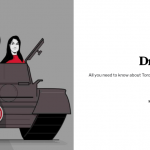A hundred tweets a day keeps the sickness at bay
How does a student journalism conference handle a norovirus outbreak? In the way they know best: through social media. Emma Godmere, Canadian University Press national bureau chief, gives a first-person account of how she and her team used a myriad of digital tools to handle a situation that was unprecedented for them and what it was like as a journalist to become the subject of a national media story.
How does a student journalism conference handle a norovirus outbreak? Through social media, of course. Emma Godmere, Canadian University Press national bureau chief, gives a first-person account of how she and her team used a myriad of digital tools to handle a situation that was unprecedented for them and what it was like as a journalist to become the subject of a national media story.
I don’t think many of us had ever used “diarrhea” in a tweet before.
But when you’re facing an outbreak of what was likely norovirus — a gut-wrenching gastroenteritis bug, sometimes known as Norwalk, that causes nausea, vomiting and, well, diarrhea — at a student journalism conference of more than 360 delegates, you use whatever terms and tools you need to spread important messages (and curb the spread of an unpleasant illness).
Twitter just happened to be one of those indispensable tools for the majority of us at the Canadian University Press national conference held in Victoria, B.C., Jan. 11–15. Most smartphone users had been overloading our followers with tweets about the days-long event anyway: search several days back into the online history of the #NASH74 hashtag and you’ll see live-tweets of speeches and sessions, announcements about the conference and journalism jokes from dozens of accounts.
Since so many of us were constantly checking in on the little blue bird throughout the week, there was no conscious effort made to keep up our social media habits as our happy, healthy conference quickly turned into the setting for an apocalyptic movie on the evening of Jan. 14. Shortly after 9 p.m. PST, 140-character reports of our delegates falling ill on the shuttle buses to our Saturday evening gala event overtook the #NASH74 feed and continued to pour in as the night wore on. By midnight, CUP staff had been in contact with health authorities who strongly recommended all delegates return to the hotel.
And when you have 360-plus twenty-somethings scattered around downtown Victoria, how else do you pass on that message?
That first tweet — disseminating those doctor’s orders — launched a near-constant stream of “crisis communications” tweets with directives and information from CUP staff and reactions and requests for help from delegates that lasted a solid 24 hours.
For CUP staff, at the outset, there was no plan, there was no protocol and few of us had ever faced such a situation before. But thanks to our smartphones and laptops, we were able to tweet, Skype, email, text and call our way through the night. When I had to suddenly excuse myself from the rest of the CUP staff group shortly after 1 a.m. and retreat to my hotel room for the next 12 hours, I used Skype to stay connected to the room in which all other healthy staffers had set up their headquarters.
From there, supported by myriad methods of communication, we identified the hotel rooms in which our most serious cases were housed, and referred them to on-site medical staff; we sent out advice and instructions on how to handle norovirus symptoms; we let everyone know we were looking into the issues of extended hotel stays and travel; and we were able to still talk to people directly, providing comfort and answers to their questions. And thanks to a combination of laptops and smartphones at our disposal, we were able to accomplish much of the above simultaneously, while sharing any updates to the situation almost immediately.
CUP staffers still went door-to-door in masks and gloves to tend to indisposed colleagues, but thanks to all our electronic means of communication, we didn’t risk greater transmission of the virus through tasking more volunteers to visit rooms — or worse, gathering the healthy and sick together in one big room in an attempt to announce information.
[node:ad]In fact, we specifically cancelled our plenary session, the annual general meeting for our organization that was scheduled for Sunday, in light of concerns over getting more people sick — and of the realization that too many were still confined to their beds and bathrooms. The Internet will come in handy once again in the coming weeks as we ensure decisions are made for the next year in CUP by bringing important votes to member papers electronically.
Despite its unfortunate ending — a shut-down gala event, a cancelled plenary session, more than 70 sick by Sunday afternoon — the conference was a terrific experience, well-organized by Camosun College newspaper Nexus and the University of Victoria’s student newspaper The Martlet. Dozens of industry professionals shared their writing, editing, photography, design, radio and reporting expertise, and we were treated to keynote speeches from alternative music expert Alan Cross, Anna Maria Tremonti of CBC’s The Current, U.S. sports columnist Dave Zirin and Esquire writer Chris Jones. It would be tough to find anyone who didn’t leave Victoria with a healthy dose of inspiration — one just potent enough to cure most of the melancholy that accompanied the contagious stomach bug.
Reading through the #NASH74 feed from that fateful Saturday night, you’ll find comic gems and witty remarks nestled in between the symptom reports and requests for help — testaments to the good spirits many delegates were able to keep up when it was tough to keep anything else down.
Those tweets caught the attention of the mainstream media, too. Reporters soon became the reported as media from across the country covered the outbreak at our journalism conference, often noting the irony of our becoming-the-story situation.
Watching the outlets after which we try to model our work was fascinating, especially as multiple journalists covered the matter at different times, in different ways, and sometimes with different information. Some outlets ran updated, follow-up stories; some didn’t. Some sought to clarify the purported “quarantine” order; some took a more critical look at the handling of the situation. Some very briefly mentioned the context of the conference; some actually approached our speakers about the outbreak. In a matter of hours, we had become our own dual case study in reporting techniques and communications methods; undoubtedly influenced by our intimate knowledge of the issue at hand, but still taking a critical look at how our story was being told on televisions and laptops across the country.
And so the biggest surprise on Saturday night was not the outbreak itself, but how much we learned first-hand as it unfolded. While we soaked up plenty from professionals in the days preceding, it’s possible the biggest lessons came out of our last day and half in Victoria, as 360 of us (an estimated 150 of whom eventually fell ill, once the following days were taken into account) worked to stay healthy and keep each other in the know about the outbreak that plagued the end of our conference.
And those lessons are not just for our own benefit. Our Twitter usage has been lauded and the Vancouver Island Health Authority is even interested in further studying how social media can assist in future outbreak situations.
Who knew the students could so quickly become the teachers?
Emma Godmere is the National Bureau Chief for Canadian University Press, North America’s oldest student press co-operative, owned and operated by more than 80 student newspapers from coast to coast.




